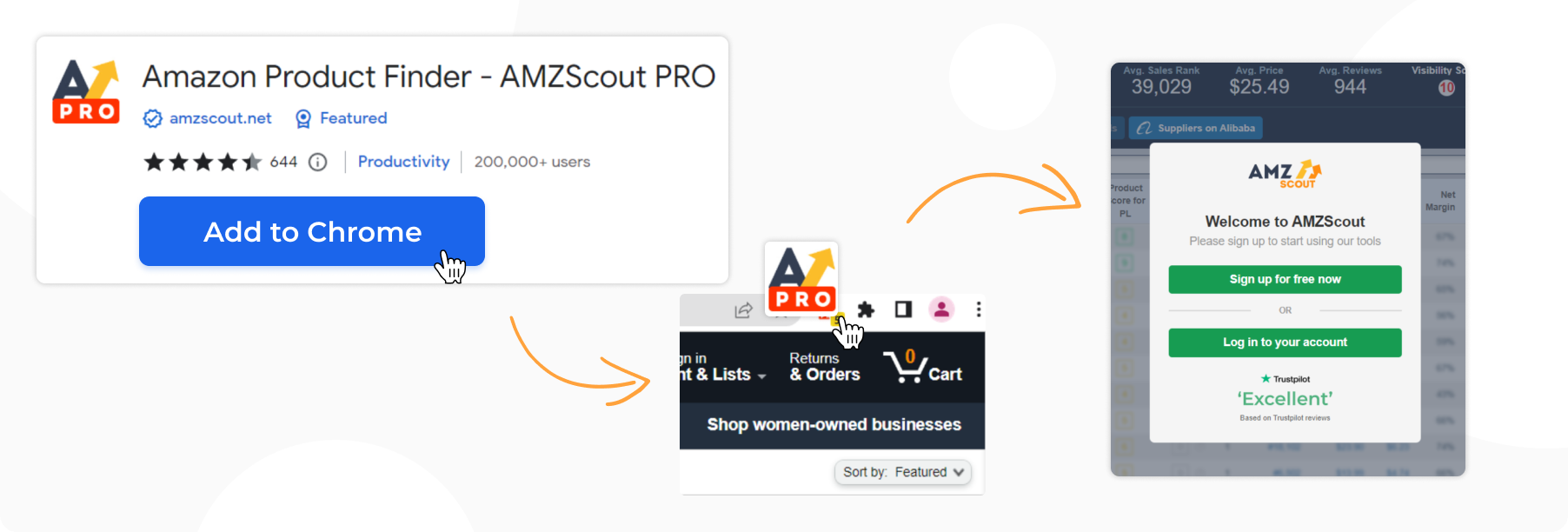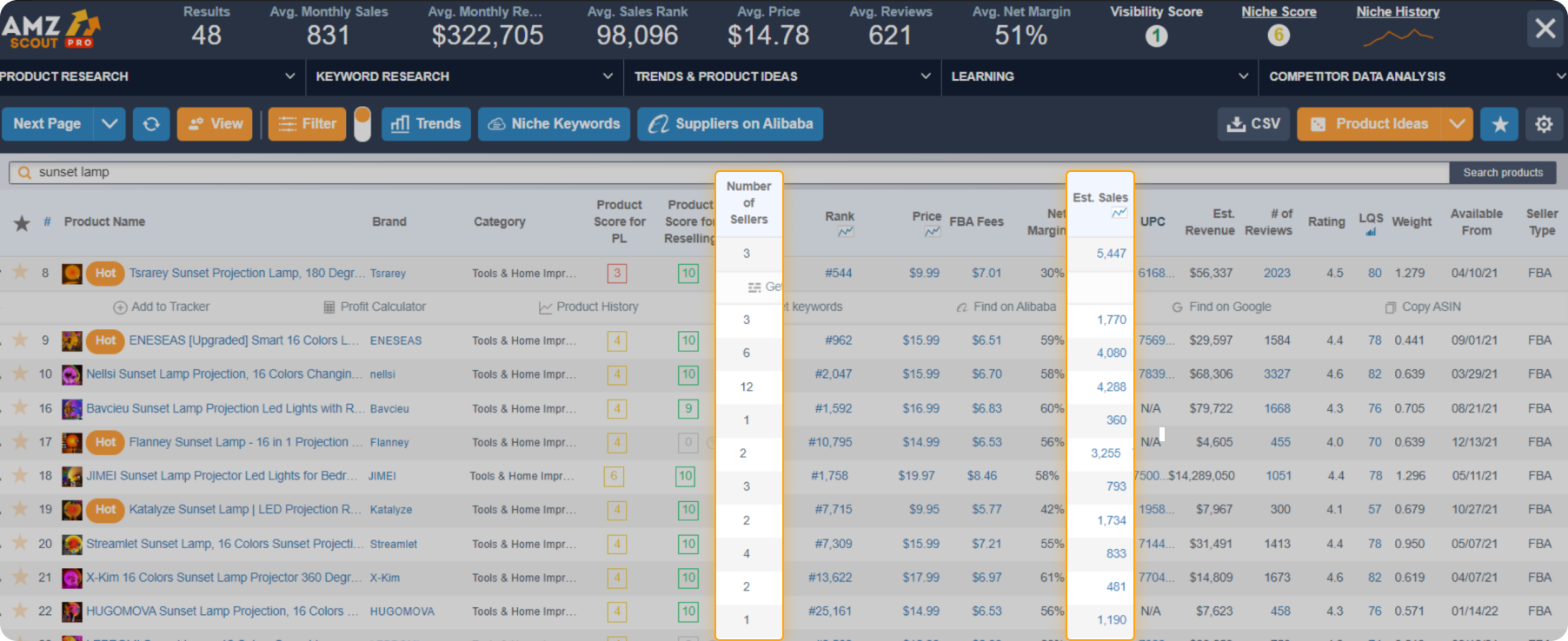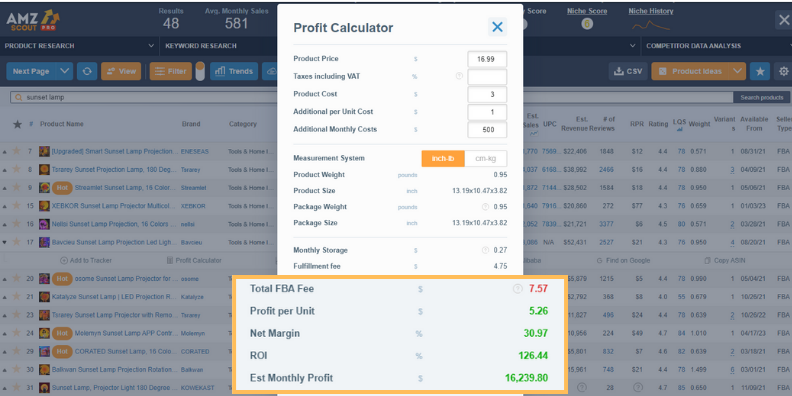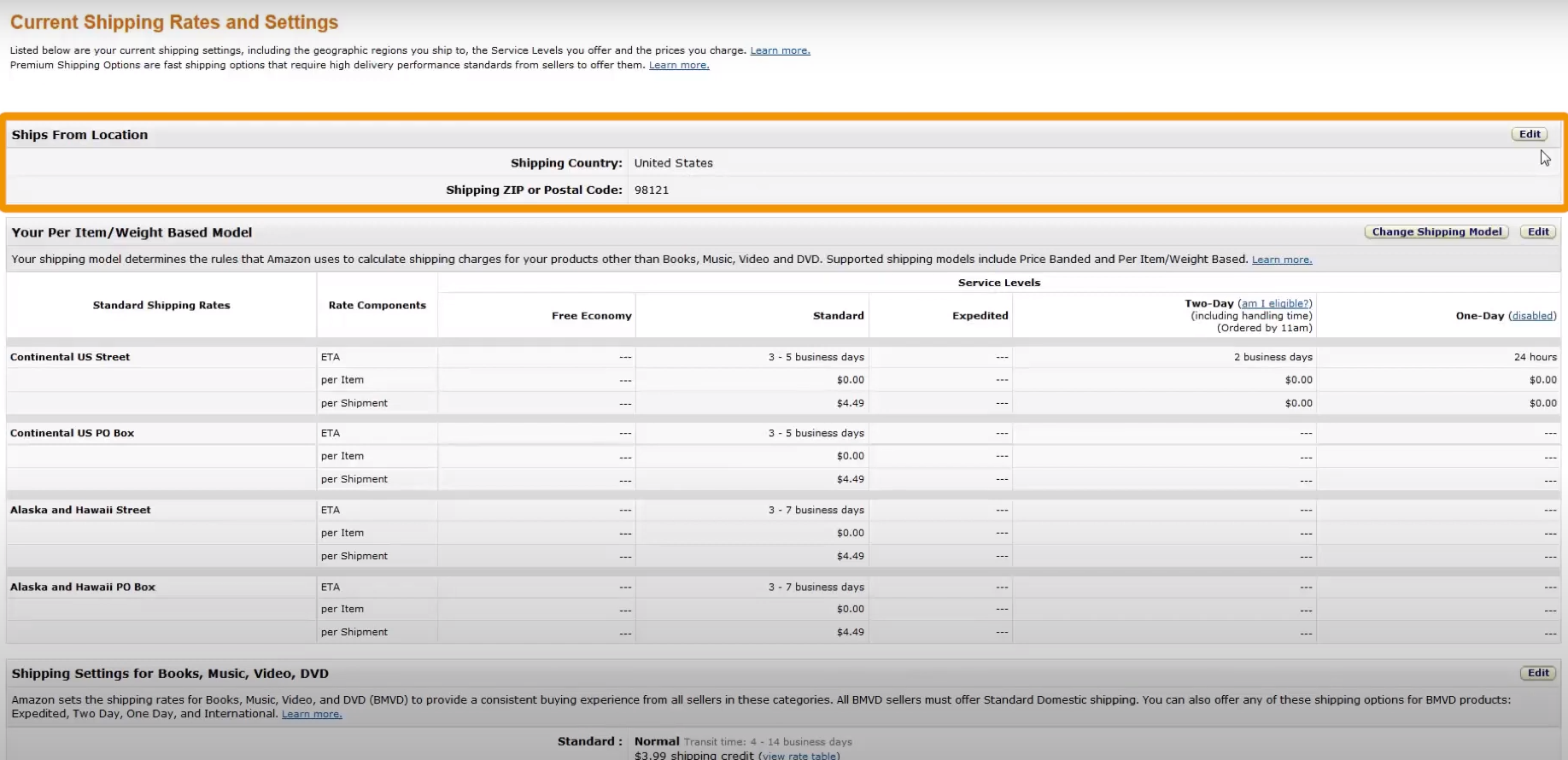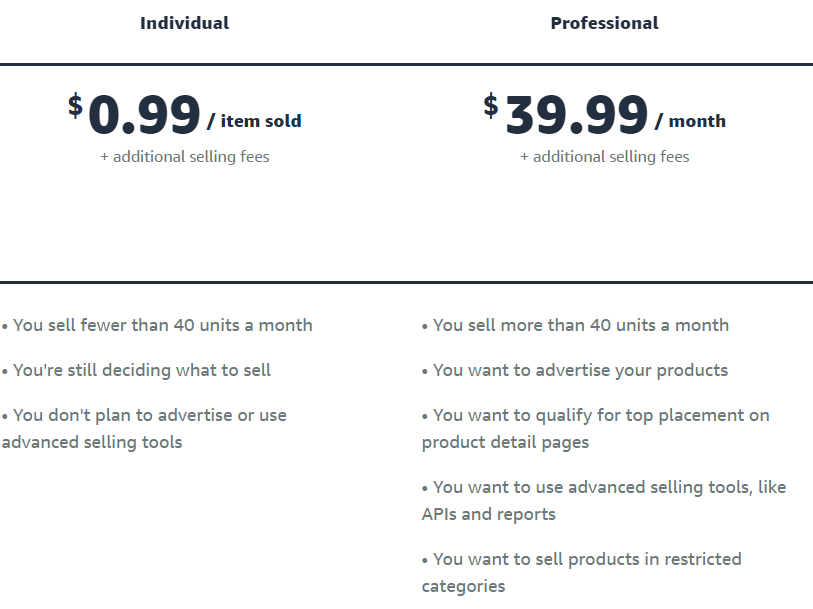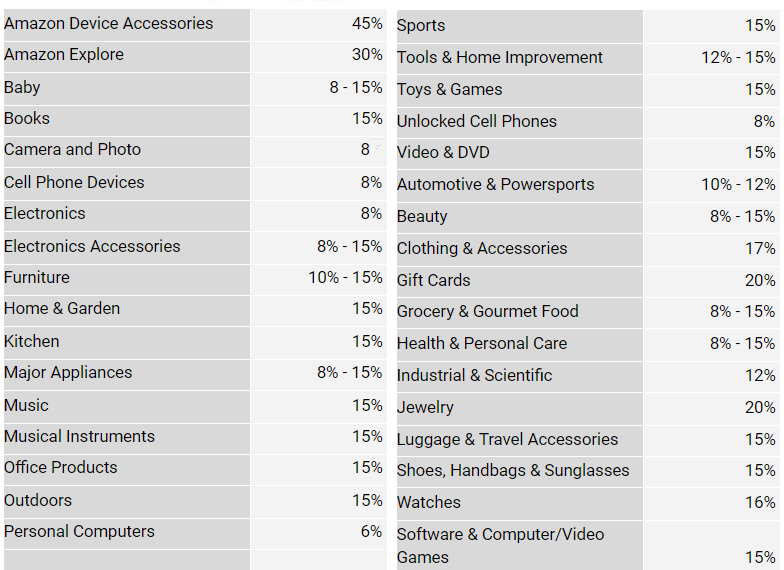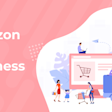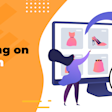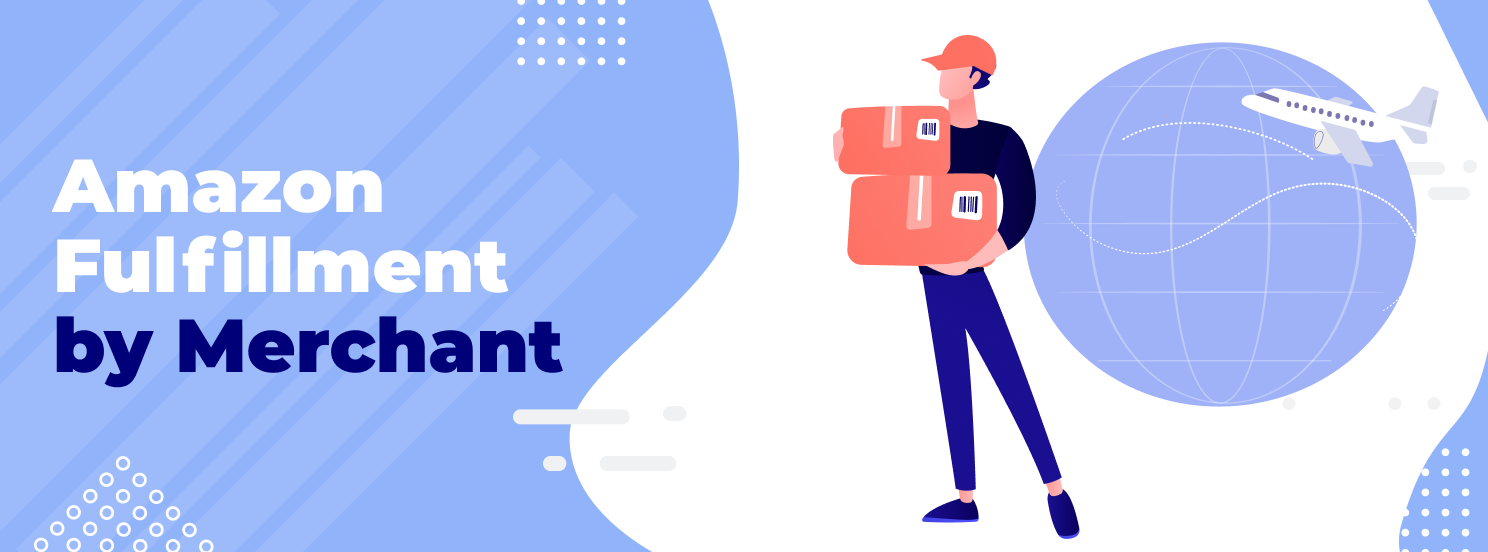
Amazon FBM: How It Works and the Benefits for Sellers
Amazon's Fulfilled by Amazon program used to be a popular choice because of its Prime badge and easy processes. However, some recent events disrupted its reliability for many businesses. Amazon's decisions to prioritize specific products and restrict sales categories made merchants realize they had less control.
As a result, more businesses are looking into the Fulfilled by Merchant option, which allows them to sell on Amazon while keeping more control. If you're thinking about this change for your business, this article explores the possibilities to help you decide.
Table of contents
- What Is Amazon Fulfillment by Merchant
- How to Sell with Amazon FBM
- What Can I Sell on Amazon FBM
- How to Set Up an Amazon FBM Seller Account
- Can FBM Still Let You Outsource Fulfillment
- When Does FBM Make Sense for a Business
- What Are Amazon FBM’s Fees
- 5 Reasons to Choose Amazon Fulfillment by Merchant
- Make Fulfillment Work for You
What Is Amazon Fulfillment by Merchant?
Amazon’s Fulfillment by Merchant (FBM) is a fulfillment option where you’re responsible for delivering products to customers who buy from you through Amazon. Amazon also uses the term Merchant Fulfilled Network (MFN). You can do the order fulfillment yourselves or outsource to a third-party logistics company (3PL) specializing in eCommerce order fulfillment.
It’s straightforward, where you manage orders and ensure delivery. You’ll need to keep your orders accurate and keep shipping on time to avoid issues both with customers and with Amazon itself. An important note is that you’ll be handling returns as well, which can increase your customer service requirements.
Amazon still had a waitlist for its Seller Fulfilled Prime (SFP) program, which allowed merchants to fill their own orders and get the Prime badge for products if they met strict delivery criteria. While the SFP waitlist persists, there isn’t a way for FBM sellers to get the Prime badge.
How to Sell with Amazon FBM
In a nutshell, the process of selling through Amazon FBM is quite similar to other selling models on the platform. The key difference lies in the importance of carefully selecting the products you wish to sell and properly setting up your FBM account, both of which will be elaborated on below. Now, let's dive into a 5-step guide on how to effectively utilize FBM for selling:
Choose Your Sales Approach: You can opt for online arbitrage, retail arbitrage, wholesale, or private label methods.
Product Research: Conduct thorough research to find the right products to sell. Depending on the product, you can decide whether using the FBM method is the best choice.
Set Up an Amazon Seller Central Account: Start by creating an Amazon Seller Central account to establish your presence.
Detailed Product Listings: Create comprehensive product listings with all the necessary details. Use a strategy that focuses on improving your search visibility.
Configure Your FBM Account: Set up and customize your FBM account to ensure everything runs smoothly.
When you use Amazon FBM, your business treats Amazon as an additional channel for sales orders. You’re still managing all of your own inventory, storage, picking and packing, and shipping. Your business will integrate its technology stack with Amazon so that you’ll get orders delivered automatically, and customers will get order information through their Amazon accounts.
What Can I Sell on Amazon FBM?
When considering what to sell on Amazon FBM, several key product criteria should be taken into account:
Low Sales Volume or Niche Items: FBM can be advantageous for products with lower sales volume or those catering to a specific niche. This approach allows you to efficiently manage your inventory and cater to a specialized audience.
Lower Profit Margins: Products with comparatively lower profit margins can still thrive on FBM due to reduced fulfillment fees. This balance in fees can help maintain profitability despite the narrower margins.
Oversized Products: FBM is particularly well-suited for oversized products that might incur high storage and shipping costs under Amazon FBA. With FBM, you can have better control over managing these larger items.
Fragile Items: Items that require delicate handling and specialized packaging, such as fragile or sensitive products, can benefit from FBM as you have more control over the packaging process, ensuring items arrive in excellent condition.
By aligning your product selection with these criteria, you can leverage the unique advantages of Amazon FBM to optimize your selling strategy and cater to products that may not fit the traditional FBA model.
Using Product Research Tools
For sellers who are still uncertain about their product choices, leveraging specialized tools like AMZScout can be a game-changer. These tools enable sellers to narrow down their options and discover products that align with specific criteria.
Go to AMZScout Product Database. Start your free trial.
Set filters. You can use a bunch of different filters, for example:
Select "FBM" as the fulfillment type to specifically target items suitable for Amazon FBM
Adjust the sales volume filter to target items with good sales volume
Choose a category you're interested in
Research product ideas. Browse through the results generated. Look for products that align with the criteria you've set. Pay attention to product details, images, and historical data.
Next, analyze the products directly on Amazon and compare them with competitors. We will delve into more data about these products.
Open Amazon and search for your product.
Analyze the data. Evaluate the average monthly sales, average profit, and product prices within the niche. You'll also find details about the product sizes, the number of other sellers, and additional information.
Check the types of sellers and select products offered by FBM or FBA sellers.
Evaluate FBA fees. Open the Profit Calculator to determine whether it's worth using the FBA method or if it's too expensive. You'll be able to view estimated FBA fees and potential profit.
Make informed decisions. With a list of potential products that meet the FBM criteria, carefully weigh the pros and cons of each option. Consider factors such as demand, competition, and market trends before making a final decision.
By following these steps and leveraging the power of AMZScout tools, you can efficiently identify products that are well-suited for Amazon FBM selling.
How to Set Up an Amazon FBM Seller Account
Here is a step-by-step guide on how to get an account and FBM established:
Integrate your fulfillment and order management tools with Amazon to handle orders and deliver customer details.
Update your account information to verify shipping and handling times as well as provide return instructions.
Ensure that you ship orders out to meet customers by the time that Amazon estimates.
Provide tracking numbers to customers.
Maintain positive customer reviews for products and minimize complaints around shipping and order accuracy.
After you have FBM ready and are performing well for customers, Amazon will give you more support options. One of the more useful is access to Premium Shipping.
Can FBM Still Let You Outsource Fulfillment?
By choosing Amazon FBM, you take back control of your order fulfillment. It’s yours to handle how you see fit as long as Amazon’s customers still get the products and information required by Amazon. That means you can easily outsource to any proven warehouse or 3PL provider.
Outsourcing can help eCommerce companies that want to meet Amazon’s requirements and get products to people quickly. A 3PL may offer multiple warehouses to ensure that customers can choose two-day shipping, and they often negotiate cheaper rates with carriers because of the high volume they ship daily.
If your business needs support with inventory or order management, demand forecasting, or knowing when to use dimensional weight calculations to ensure you get the best rate, outsourcing to an eCommerce-focused 3PL may be able to assist you in protecting and growing.

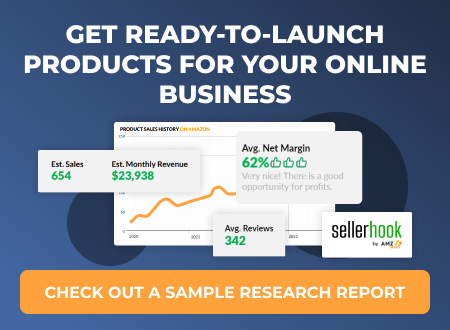
When Does FBM Make Sense for a Business?
Volatility in Amazon’s fulfillment has led many companies to consider FBM instead of the traditional Fulfilled by Amazon. While you may lose the Prime badge, you may be able to ship goods faster to customers and better protect your business. Let’s look at a few of the advantages and disadvantages of using FBM compared to Fulfilled by Amazon.
Advantages of Using FBM
You have greater control over your fulfillment and other costs. FBM allows you to manage your own operation or test multiple 3PLs to find the best fit for your products and budget.
FBM has lower fees than a Fulfilled by Amazon account, but you get access to the same impressive customer list. Find more on FBM fees below.
Control your branding with your boxes and more. FBM does not require you to use Amazon’s packaging. So, people will associate the entire order and fulfillment process with your brand, giving you more chances to impress.
Avoid other Fulfilled by Amazon requirements such as strict labeling and shipping to warehouse rules that often cause issues for new businesses.
Fulfillment is more consistent because you’re not at the whim of Amazon’s changing FBA requirements. Many companies are looking at FBM specifically because of changes that prevented them from selling orders or restocking throughout 2021.
If you outsource, you may also have a better relationship with your fulfillment company. Amazon is notorious for how difficult it can be to speak with a person to resolve an issue. Smaller 3PLs generally provide customers with a dedicated sales or support rep.
Some companies have reported that they can launch new products faster when using FBM compared to Fulfilled by Amazon. Improving the time to market would put you in a better position to improve overall margins.
Disadvantages of FBM
Losing the Amazon Prime badge is the biggest drawback for many. FBM products aren’t eligible for that tag, and many customers buy based on the Prime designation. However, that may start to shift if Amazon continues to struggle to deliver on its two-day promise.
Increased marketing costs often come with losing the Prime badge because you need to make a case for your products and drive more organic traffic. You’ll likely increase spending around product category searches and want to run ad campaigns that highlight your ability to ship within 2-3 days so that people are willing to take a chance.
The sole responsibility for fulfillment. If something goes wrong, it’s on you to make things right. You’ve got to have the people and processes or an outside relationship to ensure everything runs smoothly and that you can make people happy again in the event of a return, exchange, or refund.
Cost structures are different, and you may pay more in some cases. This might be true for the shipping costs you have to get something to a customer based on a two-day timeframe. Or a 3PL might charge you more for storage or one aspect of inventory control than other options. If you run your own warehouse, you have all the auxiliary costs, such as heating and cooling, HR for employees, parking lot maintenance, and so on.
In many cases, you’ll spend more time on order fulfillment as well. This is true if you run a warehouse and need to manage people and processes. You might also find it true if you work with a 3PL as you get used to outsourcing.
Whether you start FBM or FBA business, you’ll need to do your product research first. Try AMZScout tools to analyze data, calculate fees and costs, and choose the right products to sell.
What Are Amazon FBM’s Fees?
While switching to FBM from a Fulfilled by Amazon account will save you on a variety of costs, there are still some core Amazon FBM fees to consider. Here we’ll look at the three core costs plus something outside of the Amazon pipeline.
Amazon sellers need a selling plan, with a cost of either $0.99 per item sold or $39.99 per month. If you’re selling more than 40 units, then you’ll want the Professional monthly cost in most cases because it allows you to do things like run promotions, qualify for top placements, and integrate with the API.
Referral fees happen with each sale because you’re selling via the Amazon website. Amazon has a fee structure that varies by product category, ranging from 6% to 45%. Some products like major appliances have a complex fee structure where different values require different calculations.
If you choose the per-item selling plan, you’ll want to account for $0.99 per item sold. This fee is waived if you choose the monthly subscription cost, but it’s good to know and have the item in your spreadsheets just in case you’re trying to determine when to switch plans in the future.
Outside of this, you’ll have traditional fees associated with fulfillment. These can include storage, shipping, and inventory management costs plus expenses for packaging, kitting, and returns management. Generally speaking, companies face these costs regardless of how they fulfill orders.
If you switch to FBM, the core difference is that you have more options to fulfill yourselves or with a 3PL, and you’ll need to do more cost comparisons to get an accurate cost estimate for your specific products.
5 Reasons to Choose Amazon Fulfillment by Merchant
After weighing the pros and cons plus taking a look at fee structures, there are a few additional considerations that can help sellers determine if FBM is right for them. This list is general and it’s always a smart idea to ask fulfillment providers questions specific to your company and get concrete pricing before moving forward.
Products are different, which means you want someone who knows how to handle and package your goods safely, whether that’s a bowling ball or a tea set. With that in mind, here are some general instances when choosing FBM can make the most sense:
1. Amazon is just another sales channel for you. Suppose you’re already selling and fulfilling goods outside of Amazon, and you treat it like just another channel. In that case, FBM can allow you to leverage existing structures and partners to generate more orders without significant cost increases. Use the tools and expertise you have and keep on growing.
2. Excellent customer service is part of your existing brand. If you’ve built a following on high-quality service, using FBM allows you to maintain those relationships. You’re the people someone talks to when things go right or wrong. Adopting FBA, for example, pushes people for resolution with Amazon reps, which can harm your reputation as well as prevent you from engaging with and learning more about your customers.
3. You sell oversized or heavy products. Amazon increases its fees for products that are bulky or heavy. Your storage costs can quickly scale, and the cost of shipping is also significant. Instead, opting for FBM would allow you to ship these products more efficiently by changing packaging, using different carrier options, or working with a 3PL specializing in heavy goods and has negotiated specific rate discounts for them with carriers.
4. Your inventory turns over slowly. Amazon has long-term storage fees that scale quickly. The company even suggests that you set up automated inventory removal to avoid these high costs. Not every business can afford that, and it doesn’t make sense for expensive products that have slow sales cycles.
If you only need to make a few sales per month or quarter to keep the lights on and the ship sailing smoothly, consider using FBM and finding a fulfillment partner that doesn’t charge high long-term fees and is willing to work with lower sales volumes. This is a smart option for things like custom furniture where you can’t generate high volumes of an SKU.
5. There’s a new fulfillment trend you want to try. The last reason to consider is if you have a current fulfillment location and you want to leverage it for a current trend. A big one in 2023 is the ability for customers to buy online and then drive to a physical location for pickup. You can not only do this for a storefront but also at a manufacturing or fulfillment location if you’re regionally popular.
If you have a favorite local beer, they’re probably using a version of this to get you to drive to a taproom or brewery to sample and buy—and you can probably order online ahead of time.
Make Fulfillment Work for You
Amazon’s Fulfilled by Merchant accounts are a reliable, useful option for companies that need to control their own fulfillment and customer relationships. At the end of the day, you’ll know FBM makes sense if switching to it provides you the mix of cost-savings and customer engagement control you need to maintain or increase your current sales volume.
Great fulfillment requires a formidable team or a good relationship with a 3PL. If you’re just getting started and aren’t sure what to do, consider moving just some of your products to FBM. This will allow you to test out FBM and other options like Fulfilled by Amazon to see how the process works and if your customers are more satisfied with one or the other.
Order fulfillment is essential to your brand and business, so be willing to test multiple options to find what works best for you.
Jake Rheude is the Vice President of Marketing for Red Stag Fulfillment, an eCommerce fulfillment warehouse that was born out of eCommerce. He has years of experience in eCommerce and business development. In his free time, Jake enjoys reading about business and sharing his own experience with others.


